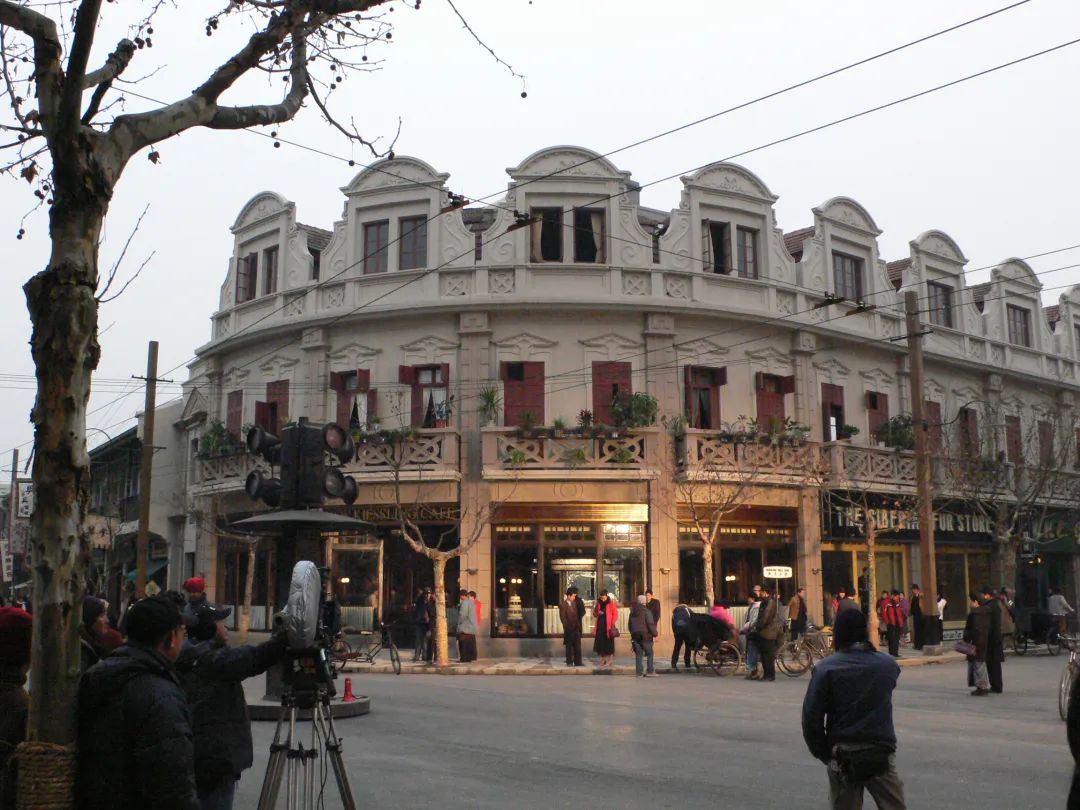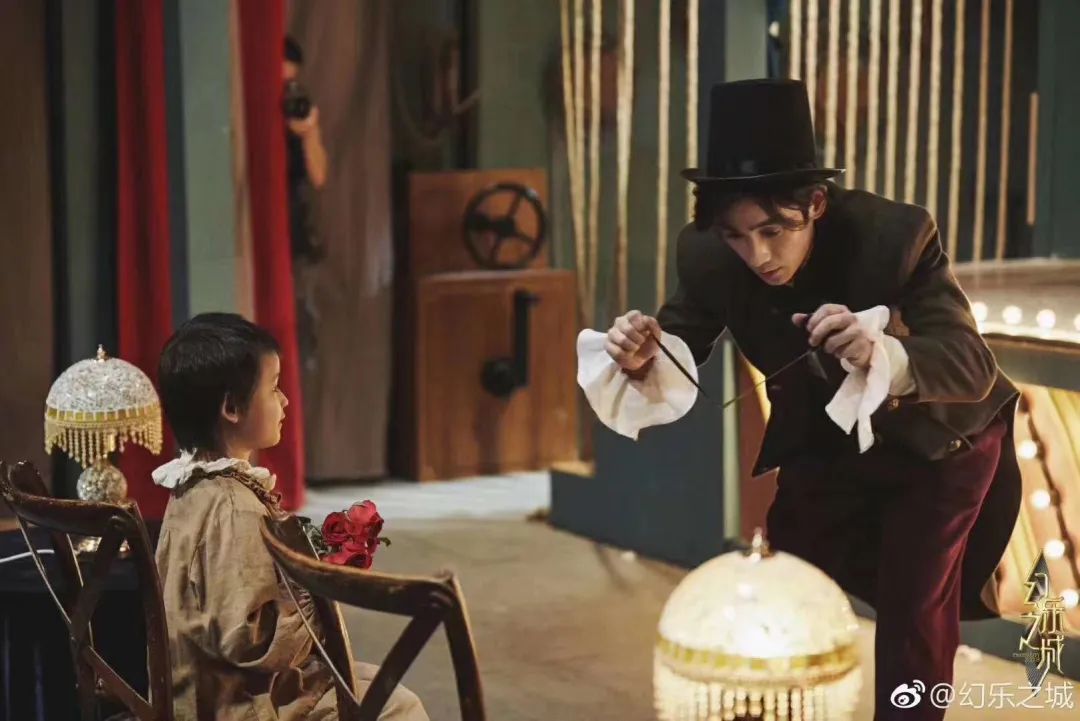In the international production system, what did Chinese film art designers learn?
Author:First financial Time:2022.06.26
26.06.2022

Number of this text: 3290, the reading time is about 6 minutes.
Guide: With the development of the film industry, film art has received more and more attention from the industry from the earliest artist to the visual style of the film.
Author | First Finance Ge Yiting
For most audiences, arts seem to be unfamiliar compared to directors, screenwriters, actors, photography and other film creation links. In fact, almost everything outside of the actors in the camera is related to art.
With the development of the film industry, the film art has received more and more attention from the industry from the earliest artist to the visual style of the film. Multiple International Film Festival Exhibitions are special honors for film art. The ART DIRECTION in the Oscar Awards is award for the award -winning art designer.
Millennium is the golden age of international film films in China. Many internationally renowned producers will bring the script starring, the main creative team and funds to China to shoot, and also bring the complete industrial processes and creative methods to China. The co -production film is not only the interoperability of shooting technology, but also means the exchange and collaboration of multinational culture. A group of Chinese film talents have obtained precious opportunities to draw creative nutrients from the artistic concept of East and West.
In 2001, Zhao Nali entered the film industry for this special opportunity. She resigned from the work of the Architectural Design Institute and participated in the art work of multiple co -production films such as "Lust Ring", "veil" and "Labe Diary". In the movie "Color Ring", a one -kilometer -long important street needs to be built. Zhao Nali recovered the scenes of Nanjing West Road in the 1930s, Japanese tavern, diamond shops such as the male and female protagonists. The massacre scene in "Labe Diary" was designed and built independently on a open space in Hongkou District. In addition, she also participated in the scene design in "Kung Fu" and "Myth".

The movie "Color Ring" restores Nanjing West Road Street View
In the studio in Shanghai Baoshan, Zhao Nali accepted the first financial interview with the First Financial Economics, recalling her nutrients from the international filmmakers and the Chinese film predecessors.
Although she has not participated in film projects densely in recent years, these experiences have always driven her to continue to create and bring this energy to a new field. In the variety show "The City of Fantasy", she serves as the art director and designs the stage with different stars. When she landed in Shanghai on the immersive drama "Sleeping Night", she served as Chinese art director and created a rich Chinese in the project. element.
Zhao Nali has always remembered that the historical consultant of "Lust Ring" once said that good stories have melody. She applies this concept to art design, just as the four seasons change is ups and downs, the art seems simple, and in fact hidden mysteries. An excellent art designer should have a pair of eyes that love to observe everything. The principle of understanding everything like a book of encyclopedia. "The work will be presented in front of everyone. It will talk. Whether it is true, it will leave an indelible evidence to leave the audience to examine and scrutinize it. "
The best time for co -production films
In 2001, Rudy Morgan Film Corporation came to Shanghai to prepare a science fiction TV series "Ping Di". The art group needed a Chinese as an assistant to understand both buildings and computers. At that time, such talents were relatively rare. Through layers of recommendation, the crew found Zhao Nali who had no experience in film production at that time.
Zhao Nali met with his work with Australia's art director, and the latter immediately hired her. Later, she resigned from the enviable work of Grade A design institute. However, in Zhao Nali's view, the crew can be more motivated than in the design of the design institute. "At that time, I had not reached the level of the drawing of my own independent drawing. But on the set, you can see the scene you designed. It really comes up, and it can be eclectic from conventional materials and shapes. "

"Ping Di" later production team, Zhao Nali in the back row
In the "Ping Di" crew, Zhao Nali, a newcomer, followed up from the early drawing to the scene, filming and the post -special effects production of the film, and fully understand the creative process of a movie. "That's the best time to shoot films." She remembered that when the international crew swarmed to that year, when filming "Lust Ring", "Mumani 3" was also filmed in Che Pier. "Mission Impossible 3" is shot in Xitang.
Working in the international production system is a process of rapid and pleasant process for Zhao Nali. The art group is usually one of the earliest teams involved in the film project. After reading the script, you need to finalize the style of each scene with the director, see the scene, draw concept maps, set up, furnishings, etc. What she missed most was the creative atmosphere, free creativity, division of labor and respect for each other.
In the process of creating these classic co -production projects, many Chinese film predecessors' pursuit and research spirit of art also affected Zhao Nali. They taught each other without reservation.
In 2003 and 2004, Zhao Nali participated in "Kung Fu" and "Myth" with Hong Kong art designer Huang Ruimin. Huang Ruimin is Jackie Chan's royal art, and has collaborated with many films such as "Police Story". Unfortunately, in 2012, shortly after the "Zodiac Zodiac" was killed, Huang Ruimin died of illness.

In the "Myth" set of "Myth", Zhao Nali "He loves to study mechanical manufacturing, and is very sensitive to the size of the scene. His work style is rough, solid, and very powerful." In Zhao Nali, the commonality of Hong Kong filmmakers is diligent, serious, and with At the same time, Huang Ruimin's profile and simply work style also had a profound impact on her, making her fierce in decision -making.
The first -level art designer of the Beiying Factory Tu Hua is Zhao Nali's most respectful predecessor. The two collaborated on the art creation of "veil" and "Labe Diary". Tu Zuhua has a deep heritage in Chinese culture. He has won the Cannes Film Festival Technology Award for "Jing Jing Xing Qin King". He is extremely sophisticated in details. Only one of the props in the "Labe Diary" is to read a lot of archives information and design it after all the principles and functions of the use.
The slaughtering Hua has an extremely accurate grasp of the color, which also affects Zhao Nali's understanding of the color: "What kind of emotions can the color express, it is sad, happy, happy, or exciting? Film scene production often makes old old old old old old. It is not dirty to make old. The effect of making old is the accumulation of life marks. The reason for these life stamps is the basis of art design. The color of the entire drama also has the melody. What changes will the color cause after the machine. "
When shooting "Lust Ring", the historical consultant will review the details of the set of scenes, giving the advice that conforms to the age, such as pointed out the pepper water made of red peppers is not red but a tea color. When designing the Japanese tavern, the director Li An reminded them that tatami was elastic, "because he used tatami at home when he was a kid," Zhao Nali recalled. When shooting, Li An often posts some articles to let the crew members feel life. "Tell us how to keep a sense of freshness in life. For example Today is different from yesterday. "
Restore real life
In Zhao Nali participating in the film design, the story of many films happened in Shanghai in the 1930s. In her opinion, Shanghai in that era has a particularly rich element, "but that rich and different from the present, you have to grasp that kind of taste, and feel it. among".
In "Lust Ring", producer Li Chaohua and art director Park Ruomu gave her a lot of creative space based on Zhao Nali's architectural design background, leading the recovery of one -to -one Nanjing West Road. To this end, Zhao Nali checked a lot of text, pictures and video materials. Through the real image of the year, the appearance of the trees on both sides of the road and the accurate distance between the upper street along the street, and then through the field visits of existing old buildings, from the internal stairs, doors and windows, and patterns to infer the outside of the building body of the past year Decoration, "Create on the basis of not violating historical facts and architectural principles."
The restoration building also means the texture of restoration. There are differences in each building. She introduced, "The Ping An Theater of Taishan Bricks and the small houses next to the two floors must be different. Some different lifestyles, some like to dry, some like to plant, and what kind of curtains, the light and darkness of the lights, these must be comprehensive considerations based on the gender, age, and class of the characters. "
Nowadays, severe changes have taken place in the external creative environment and market environment. In the past, each project has kept enough time to explore the story and design the scene based on this. Before creating "Rabe Diary", Zhao Nali had a lot of time to do the case, and made a special trip to Nanjing to interview scholars and witnesses to restore the historical scene at that time. Today, few crews can investigate the time for art design.
Right now, most of the project preparation time is very short compared to before, but Zhao Nali feels that this is worthy of reflection: "The current policies and environment have an impact on creation, but the production process is also important. Can it be able to pass longer for a longer period of time. What about preparation and more full communication to realize a better work? "She believes that compared to making fast money, she should play the energy and learned by the artist's accumulation and leave real works. As a result, she chose to enter a new field to start and find her own way.
"City of Phantom" stage stills

In 2016, Zhao Nali served as the Chinese art director of the Shanghai version of the immersive drama "Sleeping Night". With the cognition of the sea -faction architectural culture she accumulated, she created many scenes with retro elements. And design the smell for each room to open the audience's senses. In 2018, she served as the art director of Hunan Satellite TV's large -scale music variety show "The City of Fantasy Music". She designed more than ten stage scenes such as "Time Machine", "Phantom Moon" and "Ugly" for Ren Suxi, Dou Jingtong, Zhu Yilong. There is a consistent aesthetic thinking in the stage style, and every object in the scene exists for stories and characters.
"I am very fortunate to meet these good projects, so that the work can be left, just like movies. Every creation will let me break the routine, as if the brain nerves have a new tentacle and no longer stay in the original position. "However, Zhao Nali still hopes to return to the film industry she loves and leave good works." But I don’t know, is there such an opportunity? Although the field outside the movie helps me support it, I also wait for a one Good opportunities can make my talents burst again. I think there is always a chance, as long as I never give up. "
- END -
Yang Ying and Chen Qiaoen's new drama started the same period. They also played their siblings.

The idol drama was broadcast in June, and there were two sisters and siblings in l...
Draw with the heavens and the earth, reunite with the today's people, and "only this green and green", what is the right thing?

Stills of Only Green and Green. Provided by China Oriental Performing Arts GroupTh...